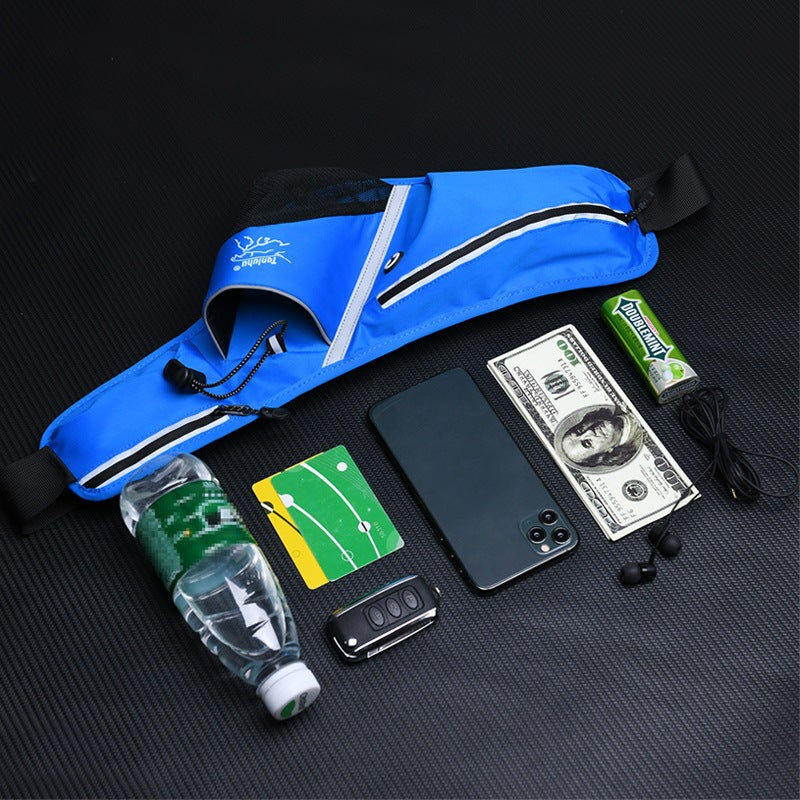Crossbody Sling Bag vs. Light Backpack: Which One Is Truly Right for You?
If you're trying to decide between a crossbody sling bag and a light backpack, you've probably noticed they seem to serve similar purposes - but anyone who's used both knows they feel completely different in daily life. Let's break down the real-world differences in plain language.
The Core Difference: Quick Access vs. All-Day Comfort
Crossbody Sling Bag = Your Go-To Grab Bag
Imagine you're running errands downtown. You need your phone for directions, your wallet for coffee, and your keys for the car. This is where the sling bag shines. Worn across your chest, it swings around in one smooth motion to give you instant access to everything. No taking it off, no awkward arm twisting.

Light Backpack = Your Mobile Storage Unit
Now picture heading to work or school. You've got a laptop, water bottle, maybe a lunch container and a sweater. The backpack's two straps evenly distribute this weight across both shoulders, making heavier loads feel noticeably lighter over time. It's the clear winner for carrying more than just the basics.

Who Should Choose What?
You'll Love a Sling Bag If:
-
You're constantly pulling out your phone, keys, or wallet
-
You prefer traveling light with just the essentials
-
You frequent crowded places where a big bag would be cumbersome
-
You want something that looks sleek and stays close to your body
A Backpack Makes More Sense If:
-
You regularly carry a laptop, books, or other substantial items
-
Comfort with weight is your top priority
-
You need free arm movement for activities like biking or hiking
-
You're often out for entire days and need to be prepared
The Honest Pros and Cons
Crossbody Sling Bag Advantages:
-
Lightning-fast access to your belongings
-
More secure in crowds when worn in front
-
Lighter and less bulky feeling
-
Easier to manage in tight spaces
Crossbody Sling Bag Disadvantages:
-
Can cause shoulder strain with heavier loads
-
Limited space (usually 2-6 liters maximum)
-
Not ideal for awkwardly shaped items
-
May need to readjust position frequently
Light Backpack Advantages:
-
Significantly more comfortable for heavier items
-
Greater capacity (typically 10-25 liters)
-
Keeps your hands completely free
-
Better for your posture with proper weight distribution
Light Backpack Disadvantages:
-
Requires taking it off to access most items
-
Can be cumbersome in crowded areas
-
May encourage overpacking
-
Less secure in busy environments
Real-Life Scenarios Where Each Excels
When the Sling Bag Wins:
-
Saturday farmers market runs
-
Airport travel when you only have a personal item
-
Exploring a new city as a tourist
-
Coffee shop visits where you want quick wallet access
-
Evening outings where you just need the basics
When the Backpack Is Better:
-
Commuting to work with your laptop and lunch
-
Day hikes where you need water and layers
-
Grocery shopping when you might pick up extra items
-
School days with multiple books and supplies
-
Travel days when you're carrying everything with you
The Surprising Middle Ground
Many people eventually own both - and for good reason. They serve different needs perfectly. Think of your sling bag as your "everyday quick-access" solution and your backpack as your "workhorse" for heavier loads. Some savvy urban dwellers even use both simultaneously - a small sling for phone, wallet and essentials worn in front, with a lightweight backpack for bulkier items.
The Bottom Line
Your choice ultimately comes down to one simple question: What will you carry, and how often will you need it?
If your answer is "just the essentials, and I'll need them frequently" - choose the sling bag.
If your answer is "quite a few items, and I need to carry them comfortably" - the backpack is your solution.
There's no universally "better" option - only what's better for your specific lifestyle and needs. Understanding these practical differences ensures you'll choose the bag that will truly work for you, not just look good on the shelf.





















